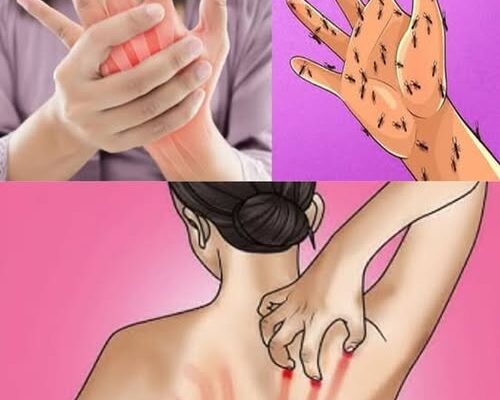It is a sign that you have too much sugar in your body.

 7 Signs You Have Too Much Sugar in Your Body (And How to Reduce It)
7 Signs You Have Too Much Sugar in Your Body (And How to Reduce It)
Excess sugar in the body doesn’t always show up as weight gain — it often causes subtle but important physical symptoms. Here are 7 warning signs your body may be dealing with high sugar levels:
 1. Tingling or Numbness in Hands and Feet
1. Tingling or Numbness in Hands and Feet
- Why it happens: High blood sugar can damage nerves over time, especially in the extremities — a condition called diabetic neuropathy.
- What to watch for: Burning, tingling, or aching sensations in your fingers or toes, especially at night.
 2. Itchy Back or Skin
2. Itchy Back or Skin
- Why it happens: Excess sugar can lead to poor circulation, skin dryness, or yeast overgrowth — all of which may trigger itchiness.
- You may feel especially itchy on the back, chest, or arms without a rash.
 3. Sugar Cravings After Meals
3. Sugar Cravings After Meals
- Why it happens: A high-sugar diet causes blood sugar spikes followed by sharp drops, triggering cravings for more sugar. It’s a vicious cycle.
- You may feel tired, hungry, and irritable soon after eating.
 4. Frequent Urination
4. Frequent Urination
- Why it happens: The body tries to get rid of excess sugar through urine, which can lead to dehydration and increased thirst.
- You might also wake up at night needing to pee.
 5. Unusual Fatigue
5. Unusual Fatigue
- Why it happens: Your cells become resistant to insulin and can’t absorb glucose efficiently, so you feel tired even after sleeping.
- You may also feel mentally foggy or unfocused.
 6. Ants Are Attracted to Your Sweat or Urine
6. Ants Are Attracted to Your Sweat or Urine
- Why it happens: When there’s too much sugar in your bloodstream, some of it is released through sweat and urine.
- If ants are gathering near your toilet, trash, or clothing, it could be a sign of excess glucose.
 7. Slow Wound Healing
7. Slow Wound Healing
- Why it happens: High blood sugar damages blood vessels and reduces oxygen flow, slowing the skin’s ability to heal cuts or bruises.
 How to Reduce Sugar in Your Body Naturally
How to Reduce Sugar in Your Body Naturally
 1. Cut Out Added Sugars
1. Cut Out Added Sugars
- Avoid soda, candies, pastries, and sweetened drinks.
- Read labels — even “healthy” products can contain hidden sugar (watch for words like sucrose, corn syrup, glucose, etc.)
 2. Eat More Fiber
2. Eat More Fiber
- Fiber slows the absorption of sugar and helps regulate blood sugar.
- Eat more vegetables, chia seeds, oats, beans, and whole grains.
 3. Prioritize Protein and Healthy Fats
3. Prioritize Protein and Healthy Fats
- They help you feel full and stabilize blood sugar.
- Examples: eggs, chicken, tofu, salmon, olive oil, avocado.
 4. Exercise Regularly
4. Exercise Regularly
- Physical activity helps muscles use glucose for energy, reducing blood sugar naturally.
- Aim for 30 minutes of walking, yoga, or strength training most days.
 5. Drink More Water
5. Drink More Water
- Water helps flush excess sugar from the bloodstream.
- Avoid fruit juices and sweetened drinks.
 6. Sleep Well
6. Sleep Well
- Poor sleep increases insulin resistance and sugar cravings.
- Aim for 7–8 hours of restful sleep per night.
 When to See a Doctor
When to See a Doctor
If you experience multiple symptoms or have a family history of diabetes, it’s important to check your blood sugar through a test. Early detection helps prevent long-term damage.
